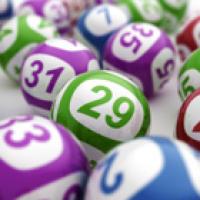
What are the odds?

What are the chances of winning the lottery? How much of a football team's league position is due to luck and how much is due to skill? What are the chances of a false positive test result in security or medical screening? Which newspaper headlines are telling the truth? Can you spot a scam before you fall for it?
Probability and statistics help to provide answers to questions like these. Whilst being the mathematics of games, strategy, and predicting the future, probability and statistics have important real world applications and are an area of mathematics that we all use in our daily lives.
The use of statistics plays an important role in all types of real world situations. Suppose you are working for a company with 100 employees, and one of which is stealing cash from the social club. To find the thief everyone undergoes a lie detector test which is an accuracy of 95% (not having enough money for Friday night drinks is a serious business). The lie detector says you are a thief, but what is the chance you are innocent?
The answer to this question is an astonishing 83%! The thief will probably also be caught because of the high accuracy of the test. As the test is 95% accurate, of the 99 innocent employees, 5% (5 people) will incorrectly be called thieves. (When a test incorrectly gives a positive result, say diagnosing a healthy person with a disease, it is called a false positive, you can read more in the Plus article Ye banks and Bayes.) Therefore, 6 people receive a positive test result, of which only one person is actually a thief. So if you test positive, there is only a 1/6 (almost 17%) chance that you are guilty!
Probability and statistics is often misunderstood, as it is a difficult area to teach and learn. The Millennium Mathematics Project (the family of programmes that includes Plus) and Winton Programme for the Public Understanding of Risk at the University of Cambridge, is addressing this issue through a schools outreach project entitled What are the Odds? The Hands-On Risk and Probability Show.
"I think risk, probability, and statistics are some of the most important and relevant areas of mathematics," says David Spiegelhalter, the Winton Professor for the Public Understanding of Risk and author of the Understanding uncertainty column on Plus. "The use of technology and hands-on activities help to inspire and excite students in understanding the link between classroom mathematics and the real world. And it's fun!"
The Hands-On Risk and Probability Show addresses the importance of probability and statistics through an interactive presentation and a 'Who wants to be a Mathionaire' gameshow. Students participate in various activities and use electronic voting handsets to respond to multiple choice questions. The questions are designed to teach them key principles involving probability, statistics, problem solving and lateral thinking.
Since the project’s launch in January 2009, feedback from teachers and students has been very positive. To read some of this feedback, find out further information, or to make a booking, visit www.mmp.maths.org/risk.